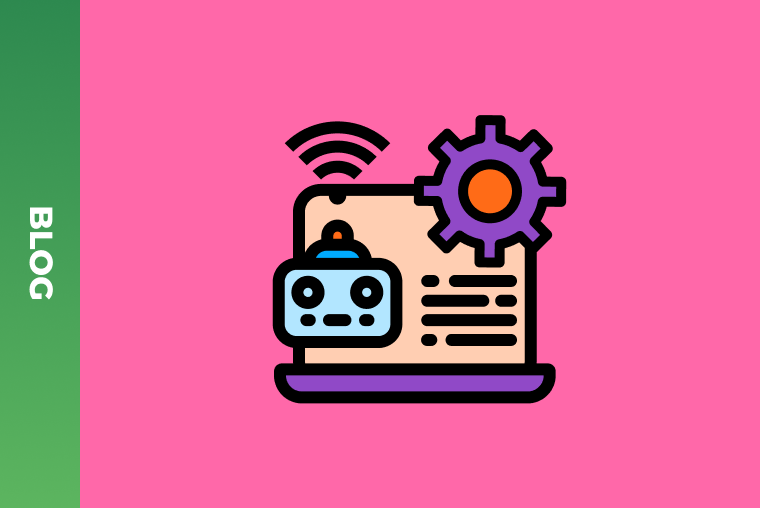Big data, due diligence, public doctors’ ratings: What is between?

Living in the era of high technologies and digitalization, patients have become more well-informed and are meticulous about the service they receive because of the plethora of information available on the internet. Yes, more and more people are looking for info about practitioners and clinics online before choosing a professional. It’s where ratings, reviews, feedback and comments play a key role in the healthcare providers’ reputation.
The Role of Social Proof in Healthcare
Exposed to more choices, not limited by proximity, we can consult a professional over a televisit, or invite a “mobile” doctor crew to visit us (mobile testing labs or concierge dental cabinets aren’t new these days).
But how can we choose when there are so many options?
Social proof is the answer. We find it in the ratings and feedback of those who tried the services already. It’s a powerful tool that affects the final decision for millions. And that’s not only about 5-star ratings. It’s more about the comments and reviews because they give more information about the doctor, clinic, service and the entire patient experience.
This provoked the appearance of with ratings and guides on how to choose a health specialist or organization. The ratings on such sites are based on different criteria:
- Some sites use patient reviews for ranking doctors and clinics, so that the ratings are based more on opinion than data.
- Some sites may promote doctors who have a paid, rather than a free, profile (so does Google when you see sites with stars on the top when entering a search query).
- Others use the quick forms with certain criteria to choose, combined with the percentage of positive and negative ratings given.
Large hospitals and clinics set up patient experience departments and use customer insight software products, while smaller practices have reputation modules in their management software.
Yet, are digital patient ratings enough to make the right choice?
What Service Providers Want vs. Person Wants
Currently, there are two main components of feedback and ratings: online reputation and return of experience. Implementing a system in which the patients provide feedback about their care and services, treatment facilities expect to get a boost of their reputation and popularity among the patients and identify issues to be fixed. For patients, they have their own motivation in leaving and reading feedback/reviews. Thus, service providers’ wants and people’s wants are not always the same.
So, below I show my vision of facilities’ expectations and the real patient behavior.
| Service Providers Wants | Person Behaviour |
| Get the bigger number of reviews as this shows their popularity | Forget to rate after emotions wear off, does not feel motivation to rate |
| Get more the positive ratings | Take a good experience for granted, but want to provide feedback when annoyed or unsatisfied |
| Get motivational ratings with free-text comments | Find writing comments to be boring (only bother to type when on cloud nine with services or really mad) |
| Receive the feedback related to a relevant care episode in a timely manner | Forget to write comments straight after the visit and leave a comment a week/month later |
| Be alerted about a problem and be able to understand what to fix clearly | If slightly dissatisfied, can be hesitant to say what was not right. Rather, will not show up again and choose another provider |
| Be protected from false ratings and feedback | Be protected from false ratings and filtering of ratings |
| Be compliant with existing privacy and security regulations | Have their privacy protected, as the HC organization has to make sure the right anonymization occurs |
When searching for a doctor, we look for both professional and personal qualities to match our goals and values. 5 stars for me and for someone else could be different. For example, I like when my dentist cheers me up and praises herself verbally for good work, but others prefer more formalized treatment and choose quiet doctors, who concentrate purely on work with no chit-chat.
So, looking through ratings and reading comments, people will be looking for those that resonate with their preferences.
This is where big data, NLP, AI and evaluation of comments/feedback are essential for providing more true and all-in ratings. All these solutions can, first, process a large amount of data, then detect and highlight the qualities and patterns described in the comments transcending the standard ones. Thus, patients will get a broad picture and it’ll be easier for them to make a final decision. Providers and administration in turn will not need to go through all the comments to understand how things are in general, as well as identify where their focus should be at the moment.
Gathering Ratings & Feedback
United States-based nonprofit organization, JCAHO (Joint Commission on Accreditation of Healthcare Organizations) accredits 22,000+ health care organizations and programs and recommends that every provider utilize a system in which the patients provide feedback about their care and services. Why? It’s a way to get insights about what level of services you provide and what gaps there are to fix to make your service more patient-centric. Besides that, it makes the organization and your service more transparent and visible to people.
Using big data solutions and the latest technologies, organizations can not only streamline and automate the process of gathering data, but analyze it in a more efficient manner. Besides, thanks to the ability of the technologies to detect not only positive but negative experiences, HC organizations can find what exactly went wrong and reveal the stages that the patents mark to be the most problematic, or even get the feedback in real-time mode.
Let’s see what modern tech offers to make the whole thing easier:
- Virtual assistants, voice to text, QR codes, screen-touch kiosks, etc. can be helpful for gathering relevant feedback. For example, a patient can use them for leaving feedback during the care journey, straight after the visit or get notified that he/she didn’t rate the service.
- UX in survey design helps to make it relevant, interesting to go through, does not have non-applicable questions, etc. so that patients can leave feedback in a few clicks or taps.
- Big data solutions and NLP can help you to categorize and analyze the most frequent patient complaints, developing a relevant taxonomy and sentiments.
- Smart workflows for feedback help prioritize feedback and escalate comments automatically if they meet a certain criteria or use certain words.
- Gamification of the process — to engage people in sharing their reviews and rating the providers. It helps patients understand they’ll have value from providing feedback. Segmentation of the audience here could work wonders. For different age groups, different styles of language or incentives could be provided.
- Emotion recognition AI is the last and more futuristic outlook at how AI could be integrated in the feedback receiving process. Face recognition and voice recognition (emotions experienced during telehealth calls) can give insights into what exactly patients feel at the moment. Emotion recognition AI solutions use advanced image or sound processing and computer vision algorithms with close to a million psychometric-trained data. Thus, the system detects and recognizes a patient’s mood and adds the record to the database that will be also a basis for the rating of the doctor or clinic.
Constantly Improve on the Received Feedback
Gathering feedback and comments is just half of the the process. It’s very important to match a patient’s journey with the feedback to understand at which stage of interaction the majority of people are unsatisfied or have problems. Analyzing all the data collected, healthcare providers can measure such important aspects as patient engagement or quality of service.
Big data solutions can enable proper automation and streamline this, allowing:
- Providers get instant access to their data, the service and care feedback, and show it in a meaningful way.
- Providers to tie a possible rating to the visit episode, easily identifying what’s wrong, proactively offer a solution
- Providers to understand what drives people when they choose a provider, including in the services description, etc. marketing and positioning (discover the HC organization’s strength)
- Providers use ratings as a measure for investments approval, e.g. a new scheduling service, new preventive hygiene programs for dentists, etc.
- Providers to track the customer journey over time, correlate feedback with the treatment outcome, payment history and further treatments
- Providers engage with each patient, help communicate with them and build trust. They could implement an incentive program — even a “Thanks for your feedback” note, and so on.
Takeaways
With a growing number of patients looking for testing, vaccination and health-related information online, it’s time for providers to position their practice and get found by more patients. Currently, only the largest physician practices and clinics are taking advantage of a powerful trend — real patient ratings, feedback and comments. The smaller practices are at times more behind in integrating new technologies and approaches into their workflows. Yet, timely and useful patient feedback can help healthcare providers to make their service more patient-centric and, thus, get a better competitive position.
With the integration of such cutting-edge technologies and solutions as big data, AI voice search and NLP combined with the right strategy, healthcare organizations can create a continual growth of patient trust and loyalty. They can improve acquisition rates and patient outcomes. Since not only stars but comments play a key role and affect the final decision, the organization should pay attention to them. All that is left to do is to find the right solution and achieve the goals.
WANT TO GROW YOUR HEALTH DATA EXPERTISE WITH GREENM?
We deliver a healthcare-focused data development services to build a successful solutions, solve data challenges, speed up the delivery.
References:






